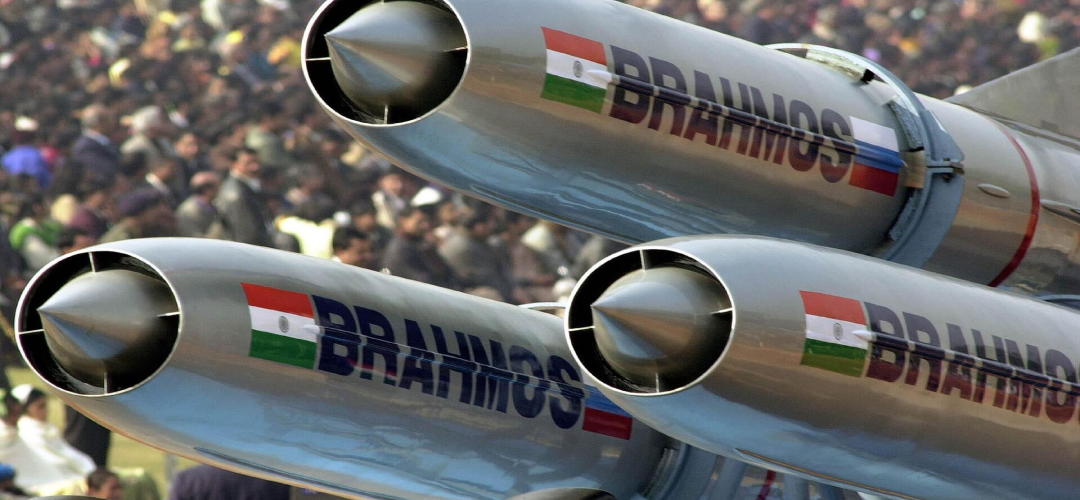With military ties between India and the Philippines growing in strength, is India venturing into the Dragons’ lair?
A recent skirmish between China and the Philippines over the disputed Second Thomas Shoal was the latest flare-up in a long-running territorial competition in the resource-rich South China Sea involving China, the Philippines, Vietnam, Malaysia, Taiwan, and Brunei.
Beijing and Manila have witnessed multiple tussles over the submerged reef in recent months, which the latter claims is within its exclusive economic zone (EEZ) while the former claims as its own. Scarborough Shoal and the Spratly Islands remain major flashpoints along with the Second Thomas Shoal waters.
Amongst all this tension, India made headlines when, under much fanfare, it completed supplying the Philippines with Brahmos supersonic anti-ship cruise missiles.
Background
Scarborough Shoal, a teeming fishing spot located conveniently close to important shipping lanes, is frequented by vessels from multiple countries for fishing. However, the shoal falls within the Philippines’ exclusive economic zone (EEZ) and has been a recurrent point of contention between Manila and Beijing.
Further, China has been interrupting the island nation’s resupply lines to its strategically positioned military presence in the Second Thomas Shoal; the last two missions witnessed alleged vessel blockades and shadowing of Philippine patrols. Recently, Manila accused China of building an artificial island at Sabina Shoal, 150 kilometres from the Philippines’ Palawan Island.
Beijing outlines its claim to the critical sea zone and transport route with a vague and controversial “nine-dash line” that cuts over the exclusive economic zones, or EEZs, of multiple neighbours in the region, including Indonesia, Brunei, Malaysia, the Philippines, Taiwan, and Vietnam. Under this unilaterally adopted boundary, China claims most of the South China waters and several islands like the Spratly group and Scarborough Shoal that are far beyond China’s 200 nautical mile maritime boundaries.
When India launched the Look East Policy and intensified its partnership with ASEAN in 1992, this also resulted in stronger relations with countries in the region, including the Philippines, both bilaterally and in the regional context. With the Act East Policy initiated in 2014, the relationship with the Philippines diversified further into political-security, trade, industry, and people-to-people realms.
Under the benign eyes of the U.S., Indo-Philippines defence ties have steadily gained strength and scope. The mainstay of bilateral defence cooperation remains capacity building with training exchanges and visits of delegations. Defence ties were significantly enhanced with the signing in January 2022 of a contract worth US$ 374.9 million to supply the BrahMos missile system.
As India and the Philippines draw closer to strengthening defence cooperation, the two countries are considering deploying an Indian defence attaché in Manila – an official representative to monitor defence plans and security developments.
As reported by the Economic Times (26 Apr 24), Chinese Defence Ministry Spokesperson Sr. Col. Wu Qian responded to a question by stating that “China always believes that defence and security cooperation between countries should not harm the interest of any third party and should not harm regional peace and stability“.

Analysis
The chances of armed conflict breaking out in the South China Sea are rising, according to a Foreign Policy article (May 29, 2024). Beijing’s aggressive actions against ships within Manila’s EEZ, particularly at Second Thomas Shoal and Scarborough Shoal, have escalated tensions. The waters are now more fraught than any other Indo-Pacific flash point like the Taiwan Strait and Korean Peninsula.
The Philippines has accused Beijing of repeated military intrusions in the South China Sea in recent months and is trying to bring Beijing’s grey-zone tactics to global attention. Grey-zone tactics are aggressive actions aiming to change the status quo without lethal force. These have so far included ramming, shadowing, blocking, encircling, and even using military-grade lasers against civilian ships and military vessels that temporarily blinded some crew members. For instance, in April, a Chinese Coast Guard blocked a Philippine maritime vessel a mere 35 nautical miles from the coast of the Philippines. Additionally, China’s fierce coast guard, referred to as a “fishing militia”, features military-trained and equipped fishermen who patrol, loiter in, and occupy disputed areas, creating a quasi-permanent presence that is difficult to shake off.
The fact that Beijing persists with its aggressive incursions despite a 2016 ruling by the Permanent Court of Arbitration in favour of Manila and against Beijing’s claimed “historic rights” over the islands points to its disregard for maritime rights and claims of regional countries. Since the Hague ruling, not only have the Chinese Coast Guard, paramilitary, and fishing vessels continued to operate in the disputed waters, but China has gone on to develop seven reefs into missile-protected military bases.
The growing New Delhi-Manila ties occur as India faces its border concerns with Beijing, notably a continuing border standoff in Eastern Ladakh. Both countries are understandably concerned by Beijing’s aggressive tactics in the South China Sea, and both share the United States as a strategic ally that is equally wary of China. Further, while India is a Quad member, Manila continues to actively engage in defence cooperation with other Quad members (the US, Australia, and Japan), making the two parts of a shared network.
Recent escalating tensions in the waters point to the growing importance of the Philippines as a critical Southeast Asian partner for India in military and security affairs and vice-versa. India has also extended a Line of Credit (LOC) to Manila towards its military requirements. India’s involvement in the region is also a part of its broader “Act East” policy, which aims to bolster ties with Southeast Asian nations.
While China continues to assert its maritime claims, regional neighbours like New Delhi and Manila are modernizing their militaries. Growing increasingly alarmed, the Philippines announced a Comprehensive Archipelagic Defence Concept. This new defence strategy turns away from its traditional army-centric military, shaped by a history of invasions and occupations. Instead, the new strategy will focus on upgrading and modernizing the navy and coast guard to counter China at sea. Still, the plan will take several years to implement and require accompanying air force support. To this end, Manila would look towards India as an additional option for its historic ally, the U.S.
Assessment
- India can play animportant role in helping the Philippines modernize its military and other facets of defence cooperation, emphasizing India’s role as a military collaborator in the region and its growing regional significance.
- Maintaining counters to Beijing through stronger ties betweenlocal and regional players like India and the Philippines, with common concerns in the South China Sea, can help discourage and maintain a check on its grey zone maritime tactics.
- This would also fulfil, to an extent the aspirations of India to act as a net security provider in its extended neighbourhood encompassing the Indo-Pacific, albeit in a small measure to begin with.




